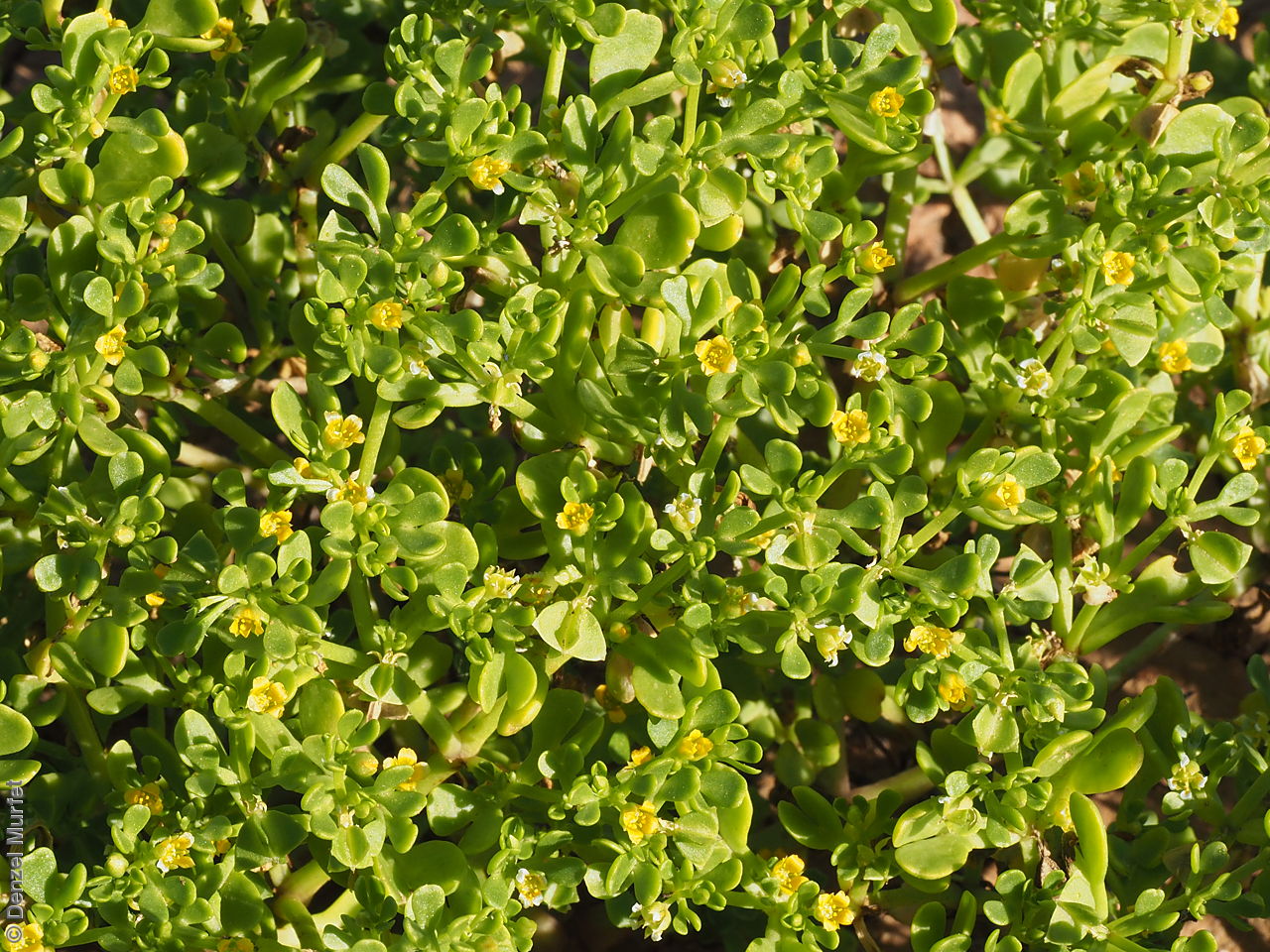
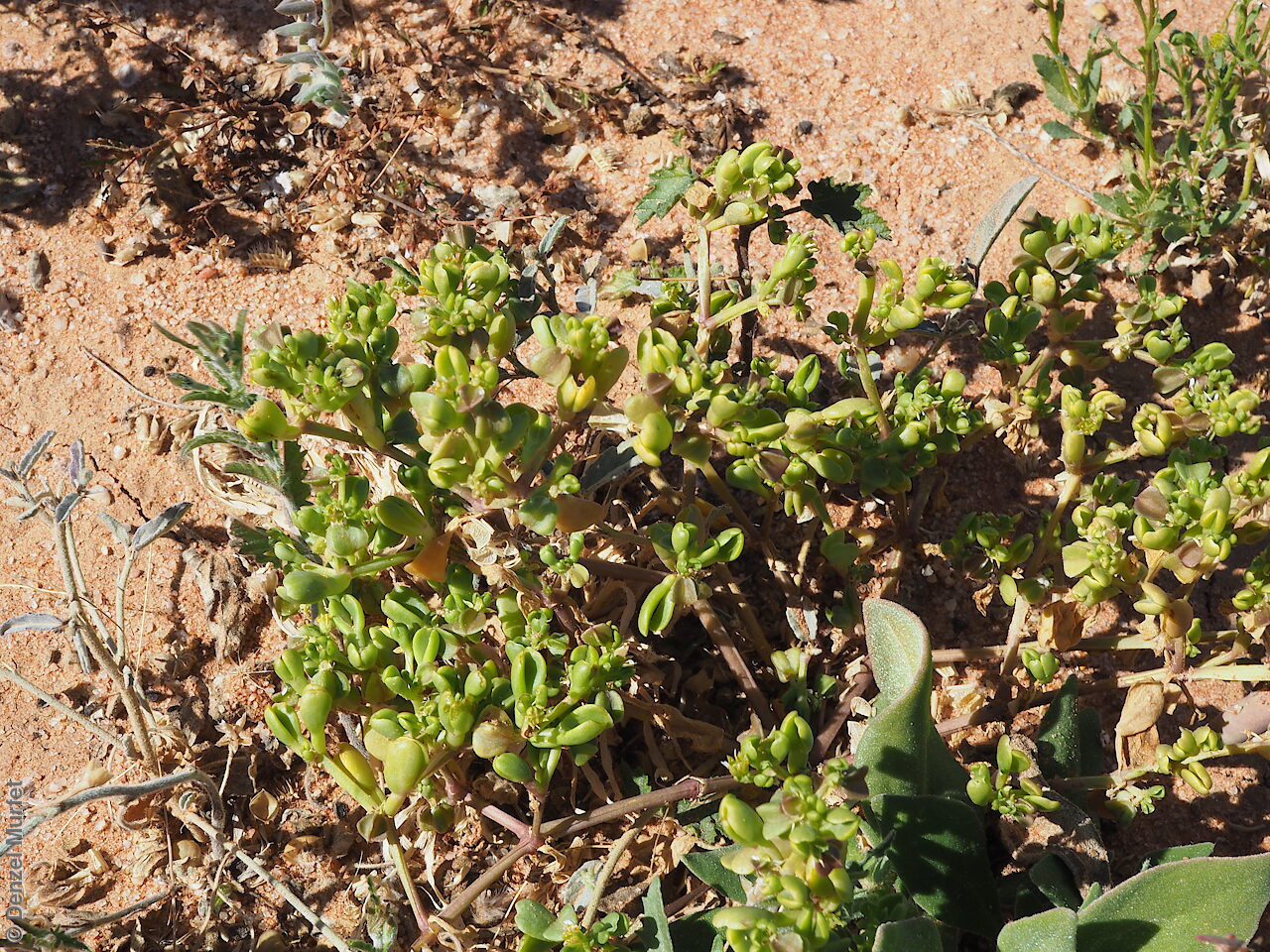

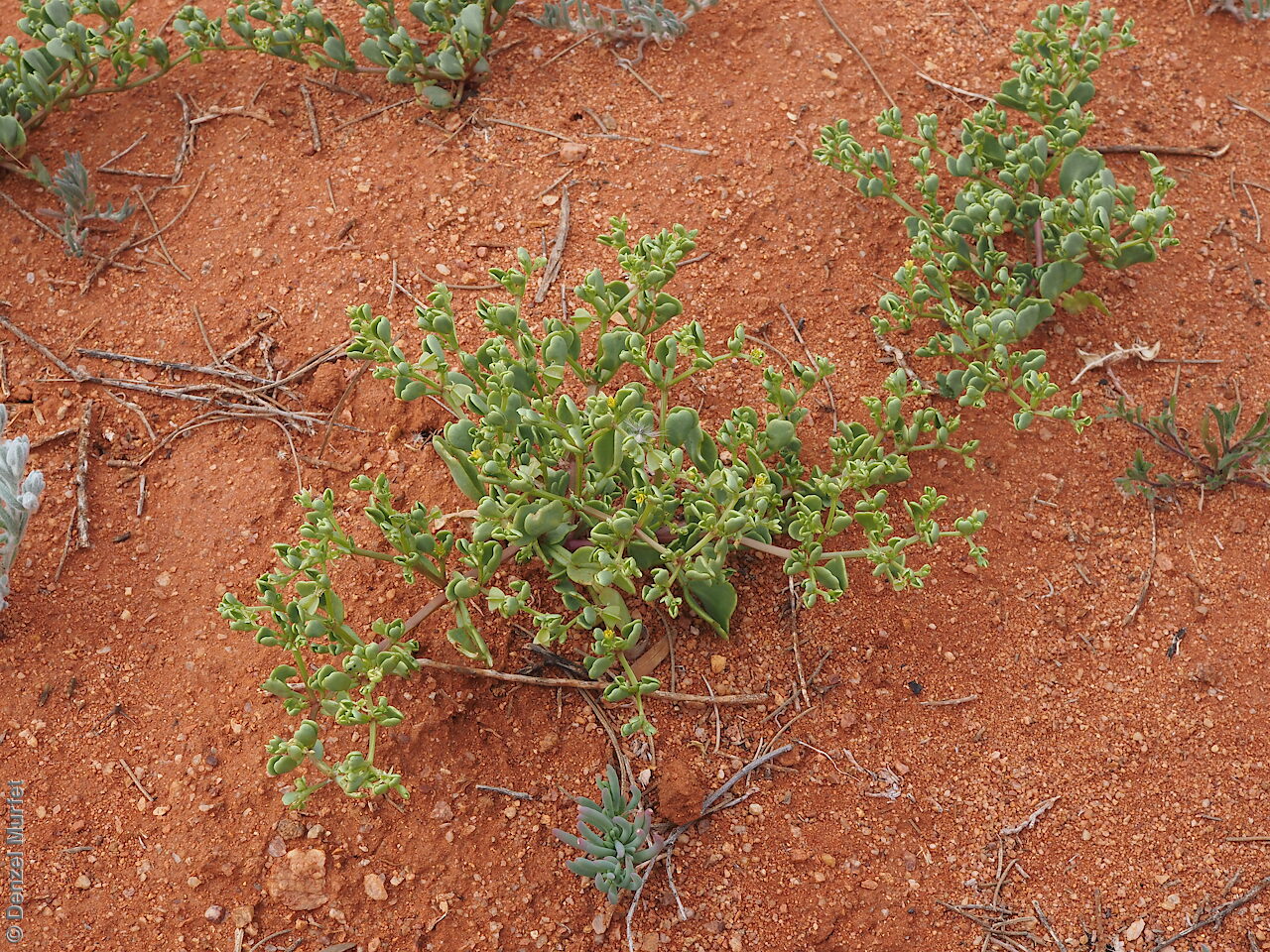
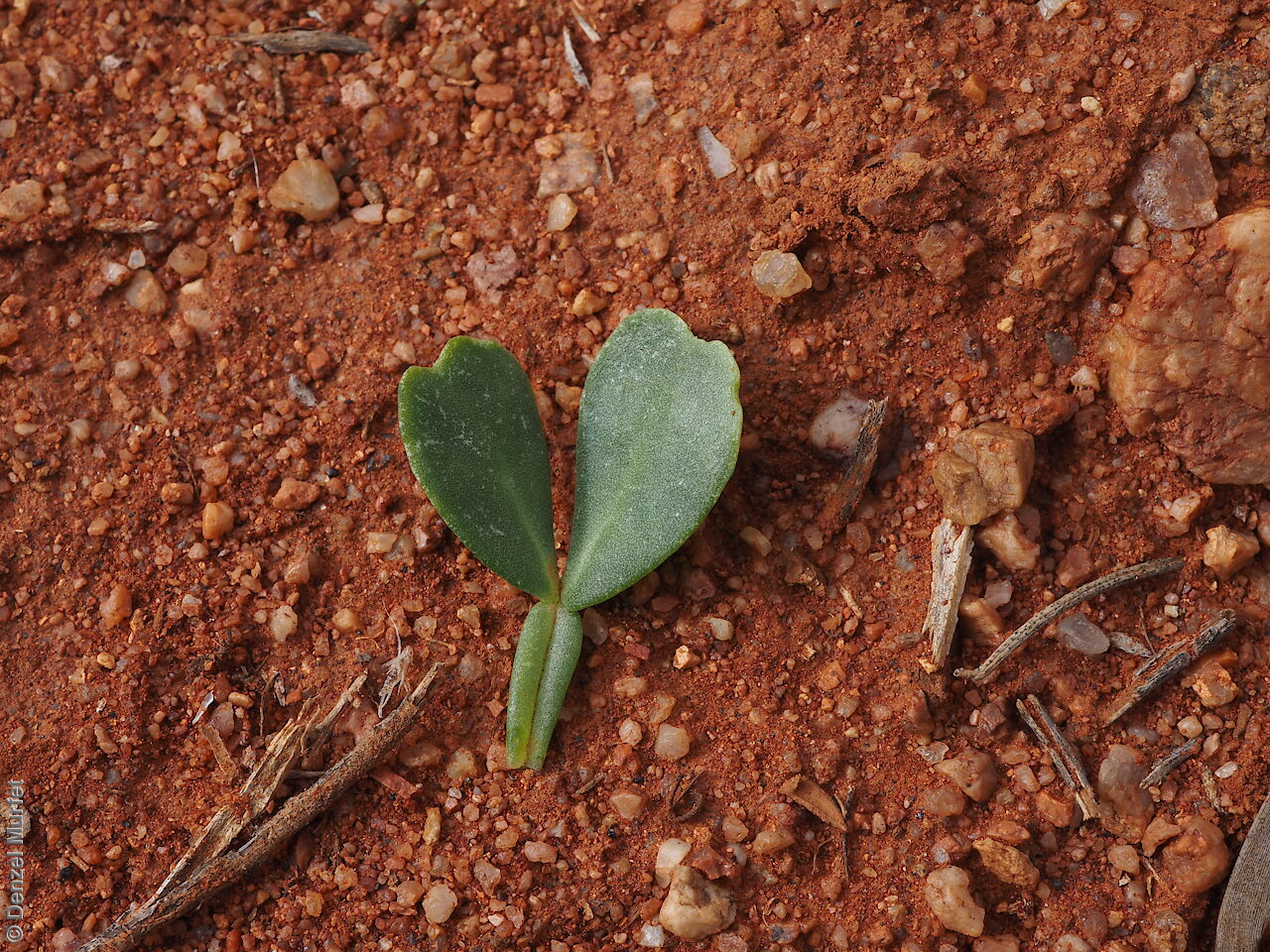
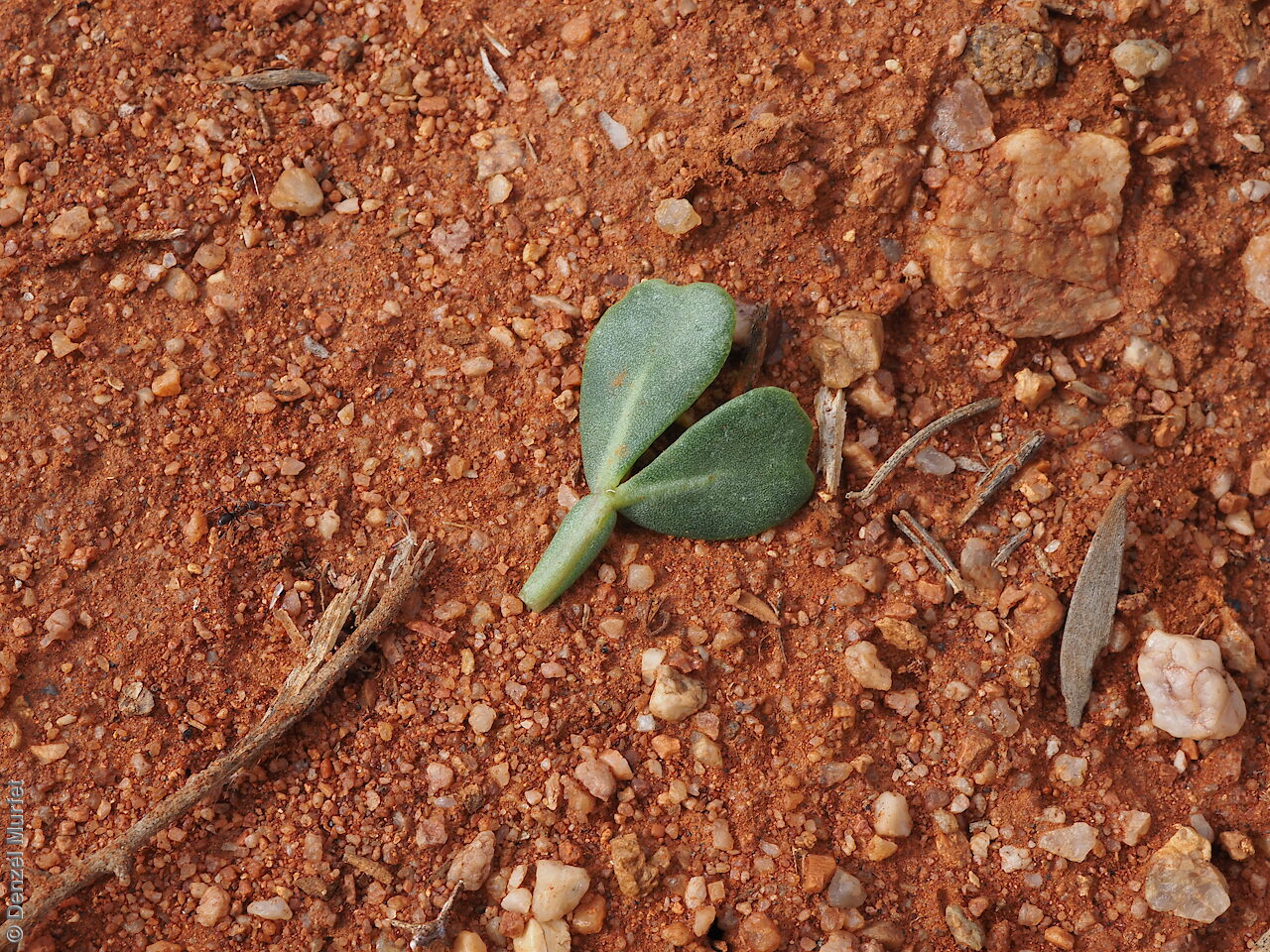
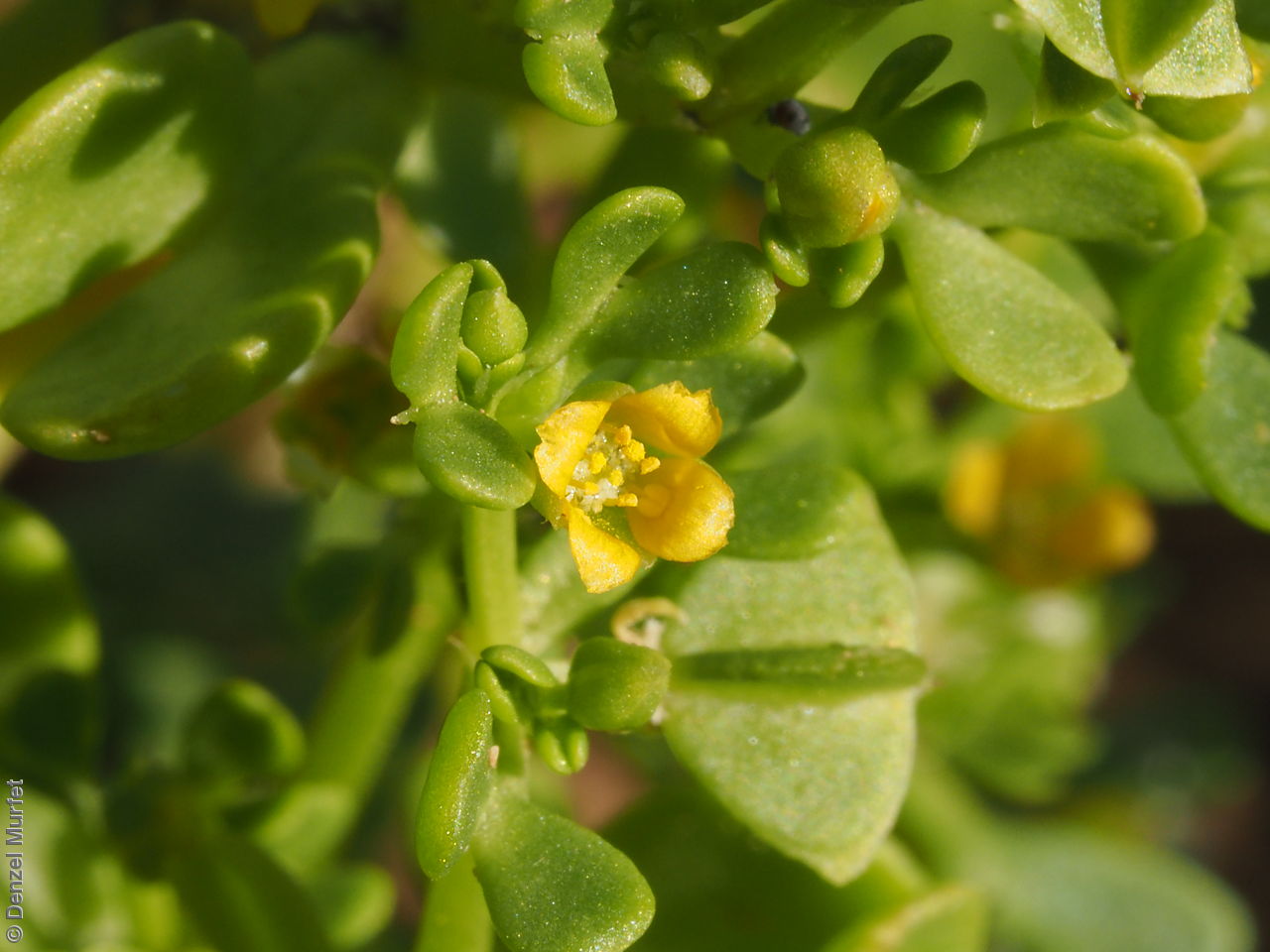
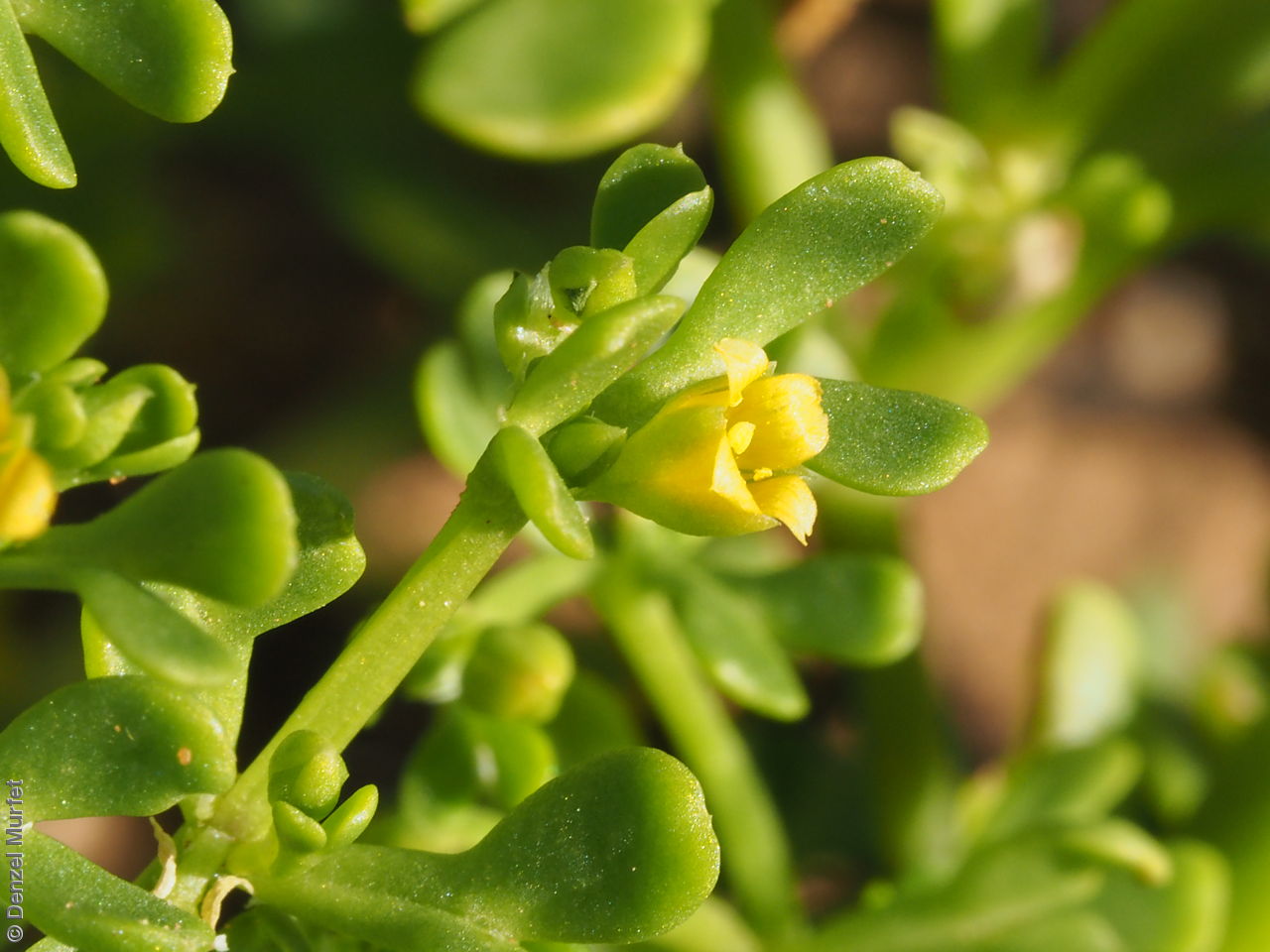
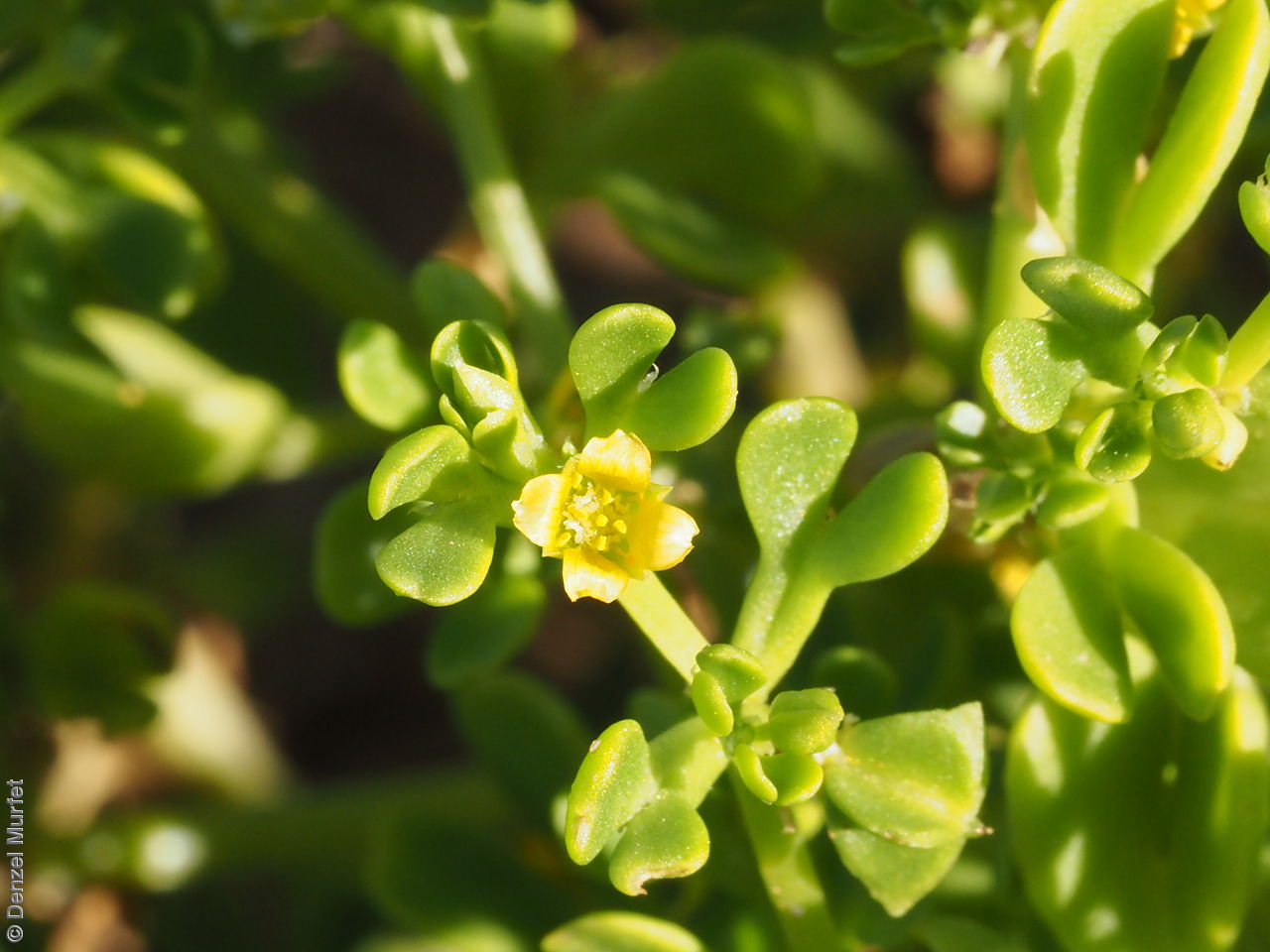

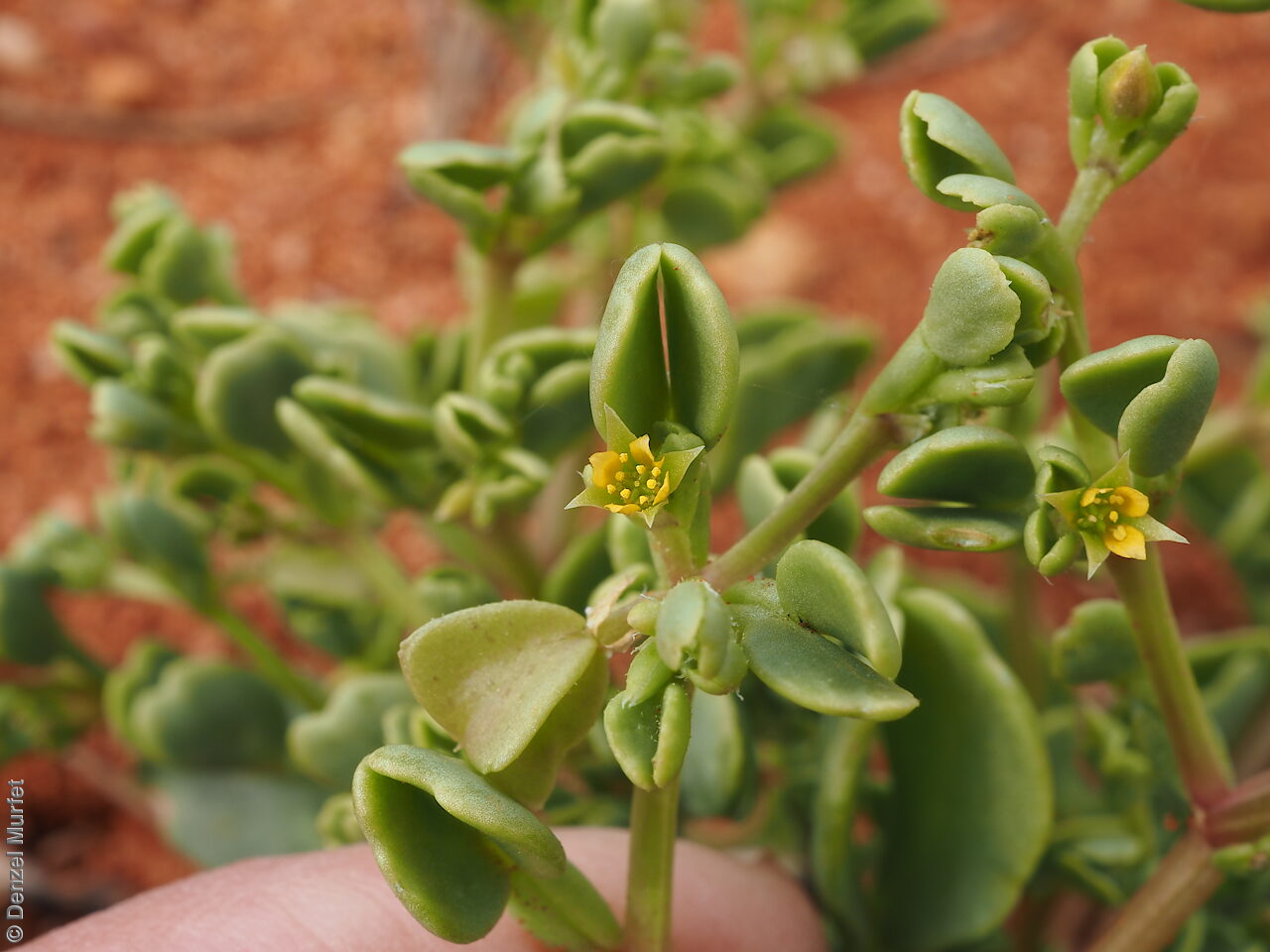
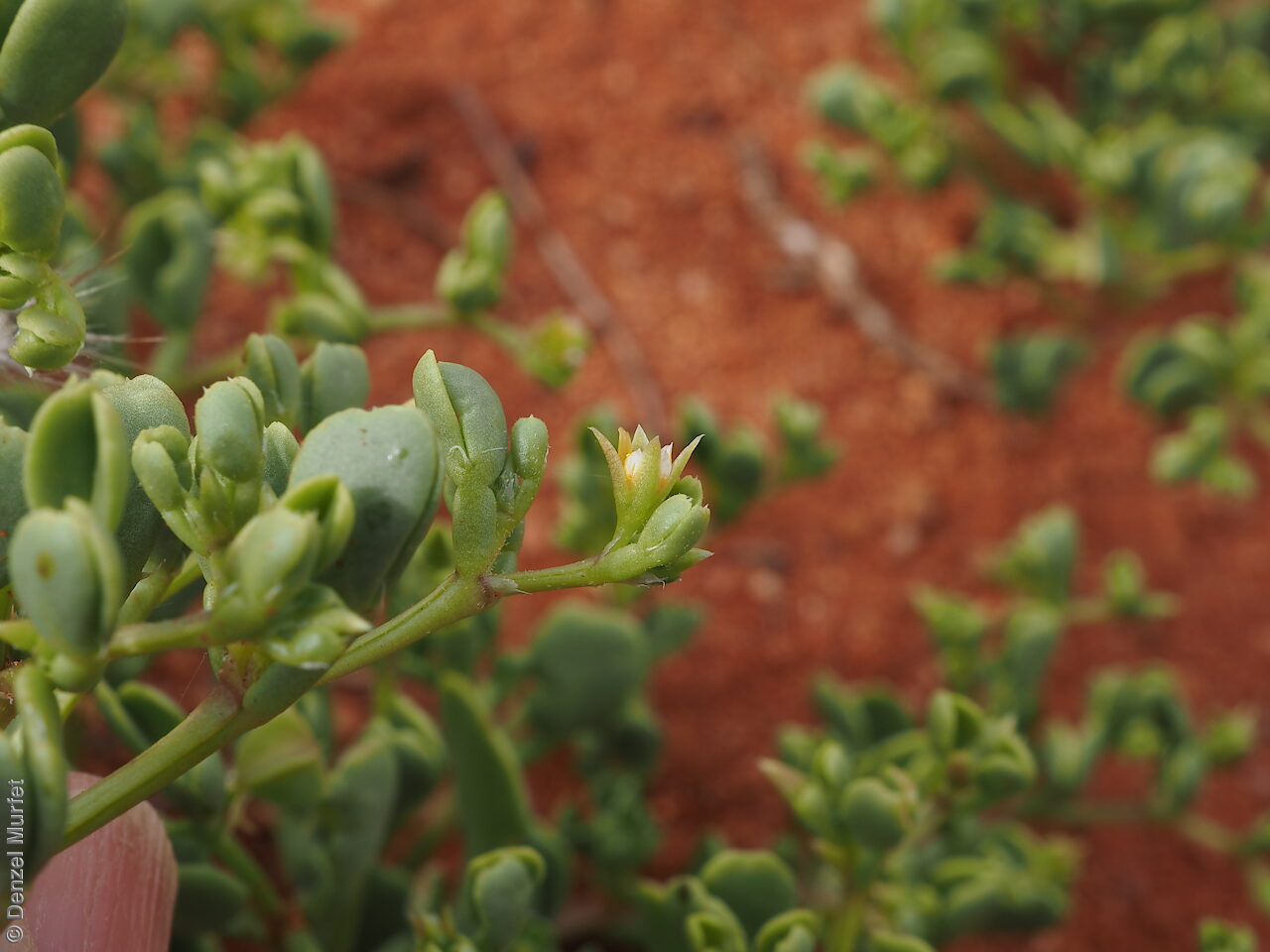

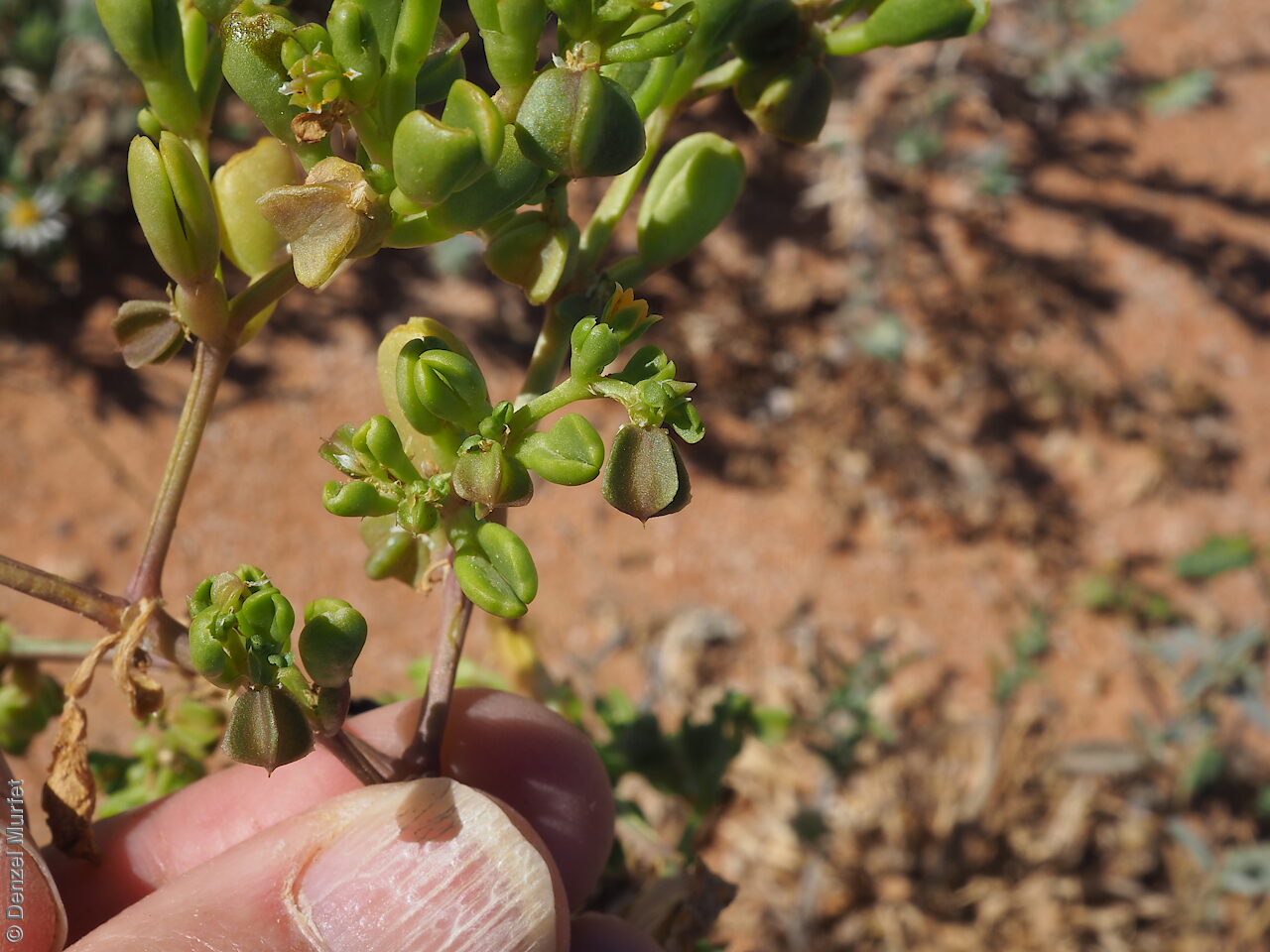
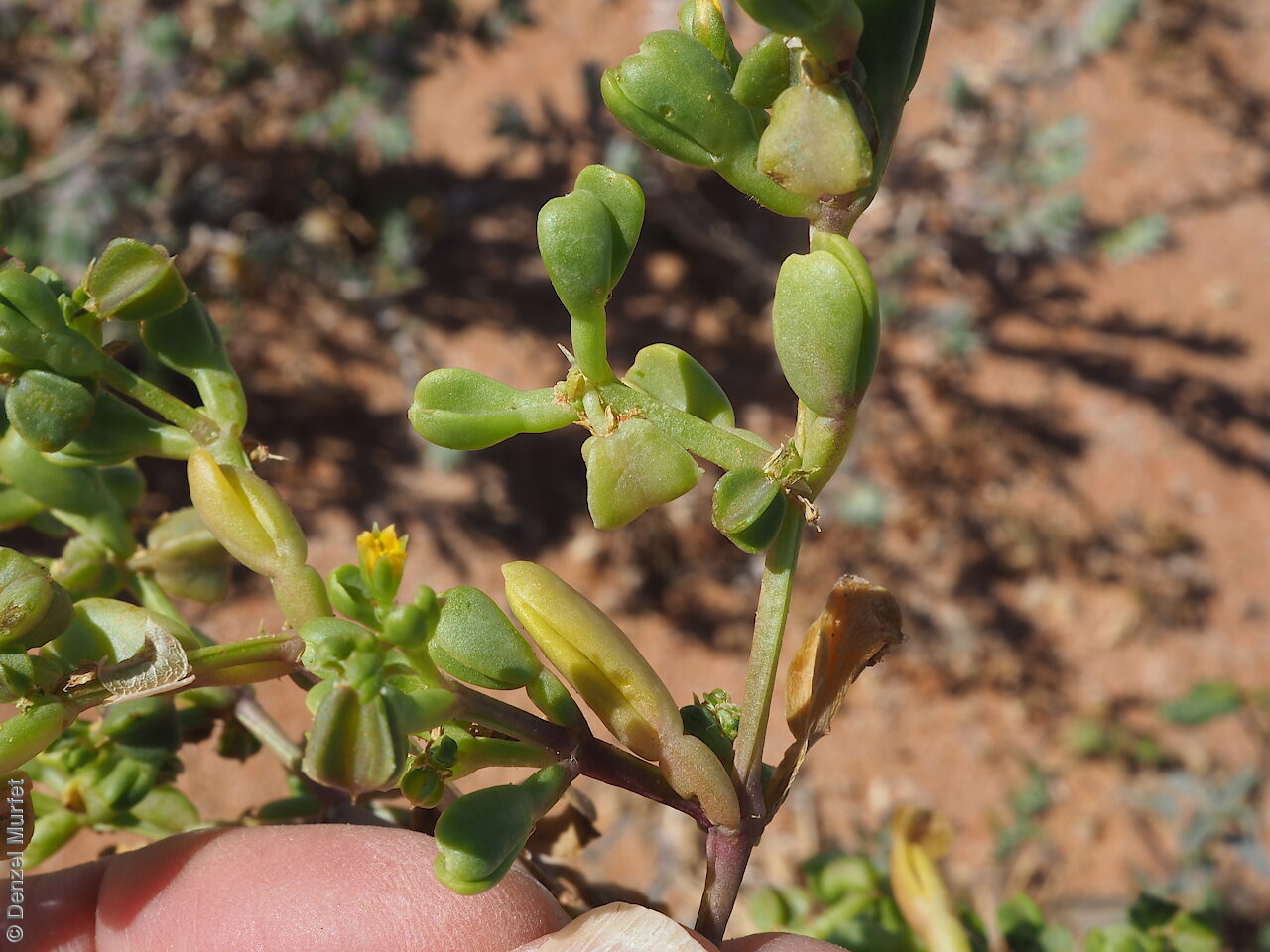
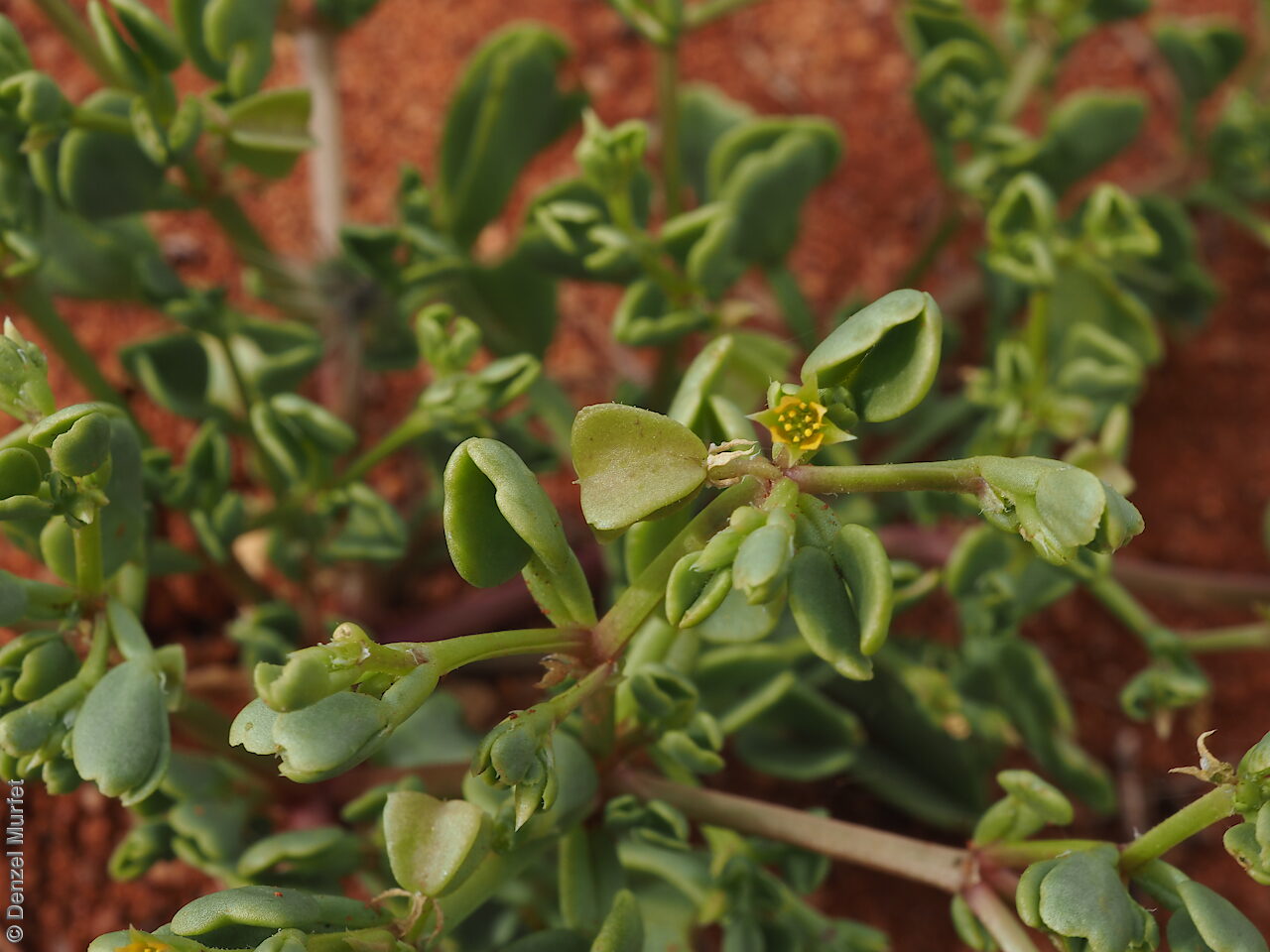
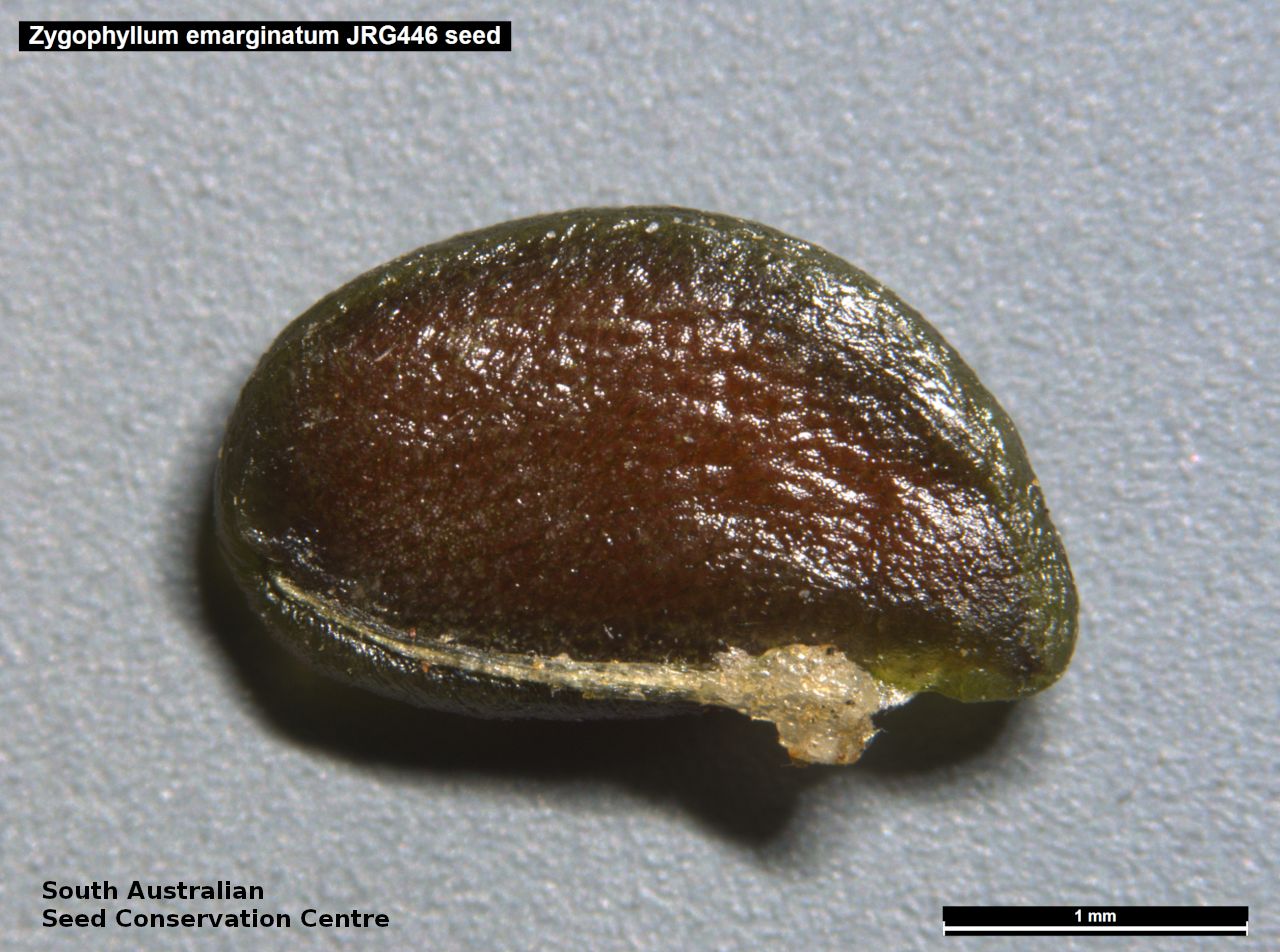
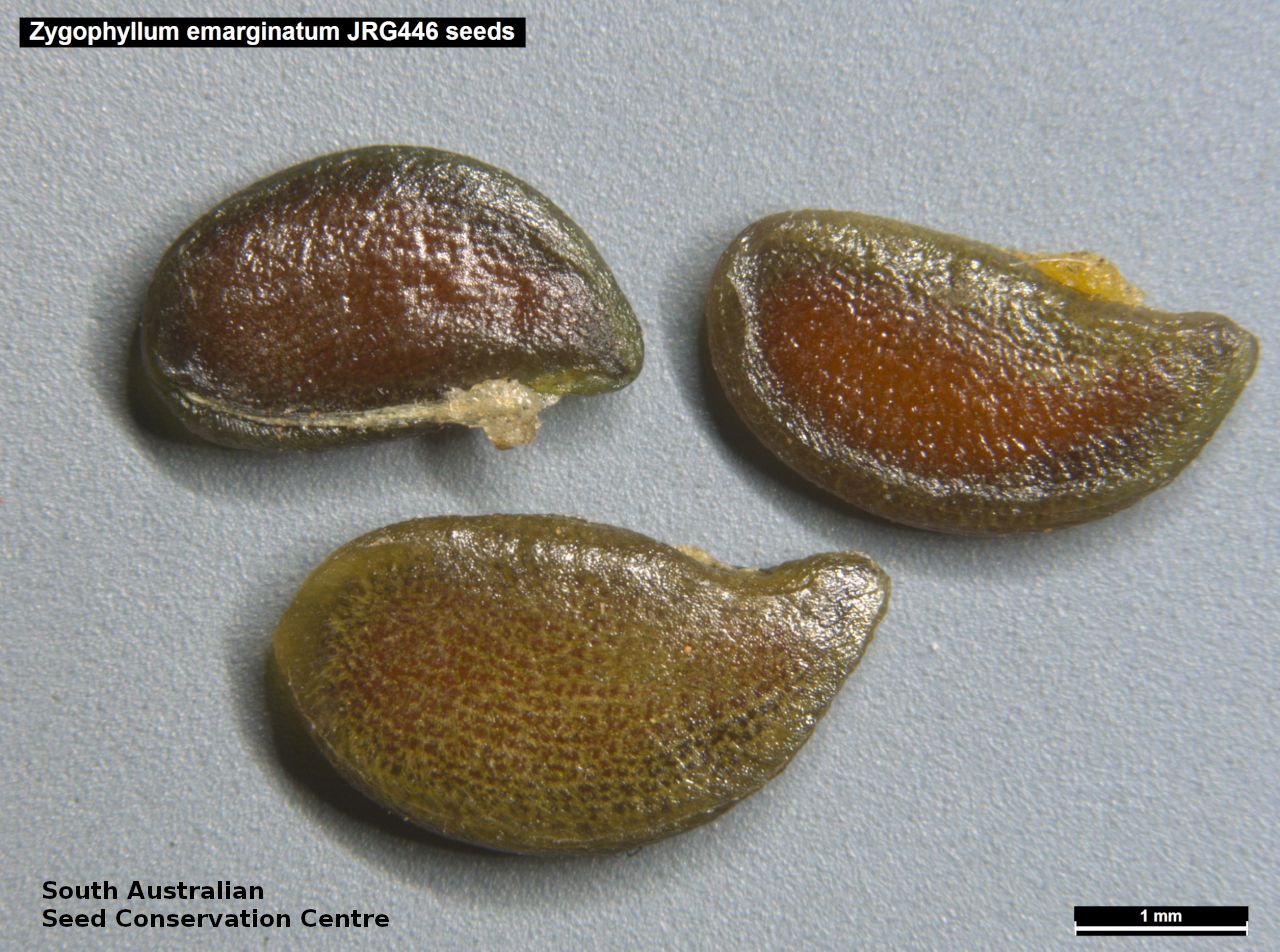


Botanical art
Prior names
Zygophyllum emarginatum
Zygophyllum ammophilum, partly
Etymology
Roepera (formally Zygophyllum which is from the Greek 'zygon' meaning pair and 'phyllon' meaning leaf; referring to the pair of leaflets making up each leaf) is named after Johannes August Christian Roeper (1801 -1885), a German botanist and physician. Emarginata means with a notched margin; referring to the apex of the leaflets which is notched.
Distribution and status
Found in the north and north-eastern parts of South Australia, growing on rocky or gravelly hills or rises, breakaways, gibber plains and Chenopod-rich plains. Also found in the Northern Territory, Queensland and New South Wales. Native. Common in South Australia. Uncommon in New South Wales. Common in the other states.
Herbarium regions: North Western, Lake Eyre, Gairdner-Torrens, Flinders Ranges
NRM regions: Alinytjara Wilurara, South Australian Arid Lands
AVH map: SA distribution map (external link)
Plant description
Spreading annual herb to 10 cm high with glabrous or inconspicuously hairy ridged stems. Leaves opposite, succulent, green, petiolate, and divided into 2 leaflets. Leaflets articulate at base, cuneate to narrow-obcordate, to 16 mm long and 7 mm wide, apex mostly distinctly emarginate. Stipules present between pairs of opposite leaves. Inflorescence small with yellow flowers, 4 sepals, 4 petals to 4.5 mm long. Flowering between June and September Fruits are pale brown capsule to 8 mm long, strongly 4-angled (but not winged) in cross-section, truncate-angular apically. Seeds are semi-flat brown shiny, ovoid to 3.2 mm long and 2 mm wide, with a reticulated surface. Seed embryo type is spatulate fully developed.
Seed collection and propagation
Collect seeds between November and January. Collect semi-dried and dried capsules by running your hands through the stems of the plant. Mature fruits will come off easily and will have a hard and dark seed inside each segment. Place the capsules in a tray and leave to dry for 1 to 2 weeks, depending on how green the fruit is. Then rub the dried capsules to dislodge the seeds. Use a sieve to remove the unwanted material. Store the seeds with a desiccant such as dried silica beads or dry rice, in an air tight container in a cool and dry place. Seed viability is usually high.
| Location | No. of seeds (weight grams) | Number of plants | Date collected | Collection number Collection location | Date stored | % Viability | Storage temperature |
|---|---|---|---|---|---|---|---|
| BGA | 12,000 (28.81 g) | 50+ | 21-Sep-2016 | JRG446 Lake Eyre | 1-Nov-2017 | 100% | -18°C |
Number of plants: This is the number of plants from which the seeds were collected.
Collection location: The Herbarium of South Australia's region name.
% Viability: Percentage of filled healthy seeds determined by a cut test or x-ray.